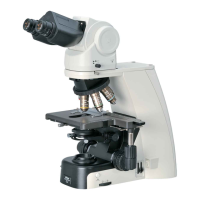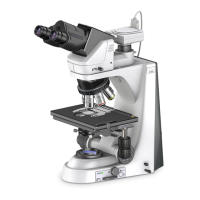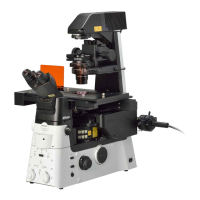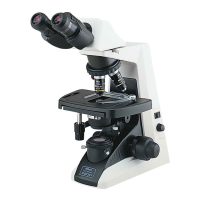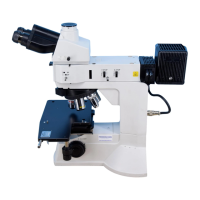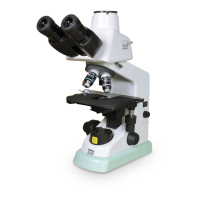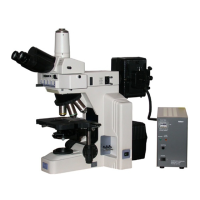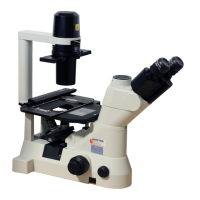Chapter 4 Troubleshooting
83
Chap. 4
Troubleshooting
1.2
Epi-fluorescence Microscopy
Problem Cause Measure
Lack of visibility around
periphery of field of view.
Illumination is uneven
across the field of view.
The field of view is not
visible.
The filter cube is misaligned.
Push the cube in to the limit.
(→Chapter 3, “6 Assembly for Epi-fluorescence
Microscopy - ■ Attaching a filter cube”.)
A fluorescent image is
not visible (when the
lamp is ON).
The shutter is closed.
Open the shutter.
(→Chapter 2, “17 Tips for Epi-fluorescence
Microscopy - Protecting the specimen and
preventing it from decoloration (shutter for the
epi-fluorescence attachment)”.)
The selection of the filter cube is incorrect.
Use a correct filter cube.
(→Chapter 2, “17.2 Selecting Filters”.)
The fluorescent image is
very dark (when the
lamp is ON).
The ND filters of the epi-fluorescence
attachment are in the optical path.
Remove the ND filters from the optical path as
necessary.
(→Chapter 2, “17 Tips for Epi-fluorescence
Microscopy - Adjusting the brightness of the
fluorescent image (adjusting the ND filters) - ■ND
filters in the epi-fluorescence attachment”.)
ND filters in the HG precentered fiber
illuminator are used to suppress the
brightness too much.
Adjust the brightness.
(→Check your illuminator’s manual.)
A halogen light source is used for a dark
specimen.
Change the light source to a mercury lamp.
A mercury lamp in the HG precentered
fiber illuminator has reached the end of its
product life.
Replace the lamp.
(→Check your illuminator’s manual.)
A designated objective is not used at UV or
V excitation.
Use a designated objective.
The room is bright. Make it darker.
The optical path switching lever is not set
to 100% of light distribution for the
binocular section.
Switch the lever position to 100% of light
distribution for the binocular section.
(→Chapter 2, “9 Switching the Optical Path of the
Tube”)
The fluorescent image
quality is poor.
The dia-illumination LED is on. Turn off the dia-illumination LED.
The filter cube being used is not suitable
for the specimen.
Use a filter cube suitable for the specimen.
(→Chapter 2, “17.2 Selecting Filters”.)
The contrast of the
fluorescent image is
poor.
The objective or cover glass is dirty.
Clean it as appropriate.
(→Chapter 5 “1.1 Cleaning Lenses”)
The immersion oil is fluorescent.
Use the non-fluorescent immersion oil
designated by Nikon.
(→Chapter 2, “17 Tips for Epi-fluorescence
Microscopy”.)
The slide glass is fluorescent.
Use a non-fluorescent slide glass.
(→Chapter 2, “17 Tips for Epi-fluorescence
Microscopy”.)
Stray light is entering from the condenser.
Lower the condenser, or remove the
condenser and attach a shielding tube.
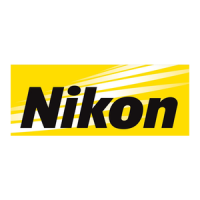
